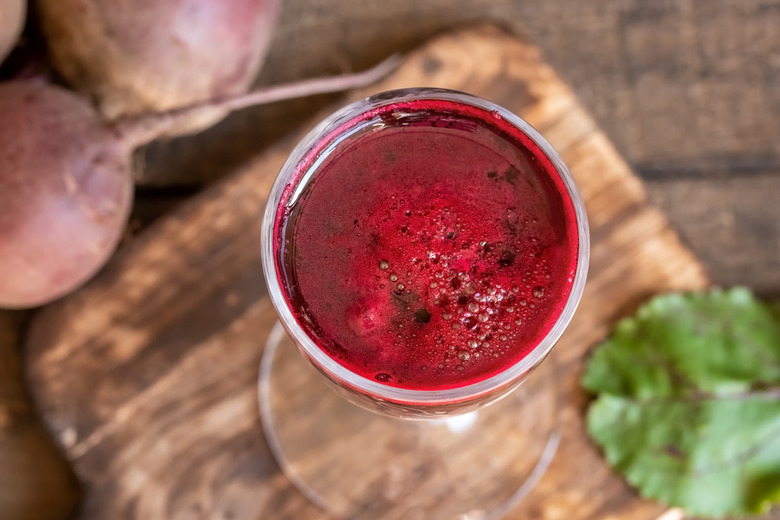How To Use Beet Juice To Make A PH Scale
Foods, liquids and other substances contain a various levels of acidity and alkalinity. You can use beet juice to test the acidity and alkalinity of various substances and to make your own pH scale. Once you have created the pH scale, use it to determine the pH level of different substances around your home.
Step 1
Wash your beet well and cut four slices from it. Put your slices of beet in a pan with 1 cup water.
Step 2
Let the water come to a boil on medium heat. Boil for 5 more minutes.
Step 3
Remove your beets from the heat and let the juice cool completely. Gently dip your coffee filters into the beet juice once it is cooled. Let the filters sit in the liquid for 30 minutes, then drain off the liquid.
Step 4
Lay each filter on the towel in a single layer. Let the filters dry overnight. Use your scissors to cut the dried filters into 1-inch wide, 3-inch long strips.
Step 5
Draw 14 boxes that are about 1/2-inch square in a row that goes down the center of your paper. Leave 1/2 inch of space between each box. Write the number 0 in the space above the first box, and continue to number the spaces between each box until you end with the number 14 after the last box. Write "acidic" at the top of your scale and "alkaline" at the bottom.
Step 6
Next to your number 1 on the scale write "battery acid." Write "bleach" next to number 13 and "lye" next to number 14. (These parts of the scale include dangerous substances that should not be handled.)
Step 7
Label each of your glasses with the numbers 2 though 12. Write down the name of each liquid in each numbered glass as you fill them, as well as on the scale in each corresponding box on the paper.
Step 8
Put lemon juice in the number 2 glass, vinegar in number 3, Sprite in number 4, Pibb soda in number 5, milk in number 6 and water in number 7. Mix your baking soda with enough water to make it a runny solution and put the mixture in the number 8 glass. Add facial astringent to number 9, hand soap to 10, and ammonia to number 11.
Step 9
Dip the end of one of your beet strips into the number 2 glass. The strip will change color based on the pH level. Tape the strip down on the scale so that the part you tested covers the box under number 2.
Step 10
Continue to test each liquid, then tape the strip under the number on the scale that corresponds with the glass number. When you are done you will have a range of colors on your scale that represents the possible pH levels of substances when you test them using beet strips. Acidic liquids will produce shades of red on the test strips, while blue indicates alkalinity.
Step 11
Test your cup of coffee with a beet strip, and match the color change to your scale to determine the pH level. (Most coffee should fall around pH 5 on the scale.)
Things Needed
- Beet
- Saucepan
- 1 cup water
- Coffee filters
- Towel
- Scissors
- 8-1/2-inch by 11-inch sheet of paper
- 11 small glasses
- Labels
- Lemon juice
- Vinegar
- Sprite
- Pibb Soda
- Milk
- Water
- Baking soda
- Astringent
- Liquid hand soap
- Milk
- Ammonia
- Tape
- Cup of coffee
Warning
Never test bleach or any products containing bleach with your test strips.
References
Cite This Article
MLA
Coe, Robin. "How To Use Beet Juice To Make A PH Scale" sciencing.com, https://www.sciencing.com/use-juice-make-ph-scale-5761692/. 18 December 2009.
APA
Coe, Robin. (2009, December 18). How To Use Beet Juice To Make A PH Scale. sciencing.com. Retrieved from https://www.sciencing.com/use-juice-make-ph-scale-5761692/
Chicago
Coe, Robin. How To Use Beet Juice To Make A PH Scale last modified March 24, 2022. https://www.sciencing.com/use-juice-make-ph-scale-5761692/
